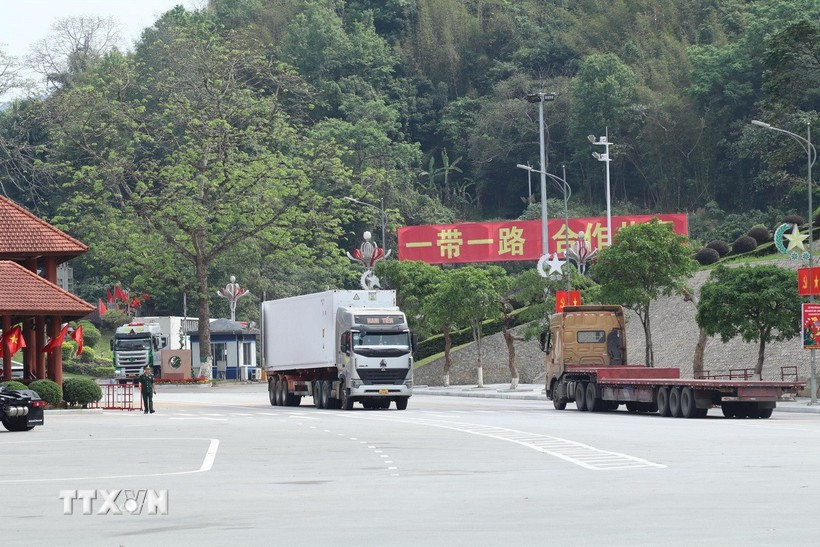Smart port model helps boost Vietnam-China border trade

Hanoi, August 28 (VNA) – In recent years, cooperation between Vietnam and China in building “smart border gates” has become an important highlight, helping to remove bottlenecks in the flow of goods, especially agricultural products.
This is not only a practical step to promote bilateral trade but also demonstrates the determination of both countries to modernise border management, in line with the trend of comprehensive and extensive development.
Previously, it took 3–5 days for a truck to complete all procedures, but now the process only takes about 15 seconds. The synchronised application of QR code scanning, facial recognition, and fingerprint identification allows drivers to quickly finish entry procedures. In particular, fruits with short shelve lives, such as durian, a product highly popular in China, can now be transported cross the border without the risk of spoilage due to delays.
Since 2023, the Youyi Guan customs in Guangxi, China, has operated an intelligent quarantine system, enabling Vietnam and China to digitalise the entire coordination process. The average waiting time for each truck has been reduced by 3.5 hours, and the need for transshipment minimised. In 2024 alone, the number of trucks clearing customs at the Vietnam – China border gates reached a record of 3,300 per day, double the figure of 2019.
Another highlight is the application of advanced science and technology. Driverless trucks, smart cranes, 5G technology, and the Beidou navigation satellite system have been deployed, making border gate operations largely automated and moving toward 24/7 operation. This is China’s first cross-border smart border gate model, which has delivered tangible results and is continuing to expand.
The joint efforts of the two countries to promote cooperation in reform and capacity building of border gate management not only shorten customs clearance times but also lay a solid foundation for stable and sustainable bilateral trade ties.
Zhu Houdong, deputy chief commander of the China–Vietnam Friendship cargo transport corridor-smart port project, told the Vietnam News Agency that the purpose of building the smart port model is to achieve the goal of rapid customs clearance, ensuring goods can be transported from Nanning to Hanoi and vice versa within 24 hours, thereby maximising the stability of supply and production chains between the two countries.
In the coming period, based on the existing infrastructure, the current customs clearance capacity will be doubled, Zhu added.-VNA





